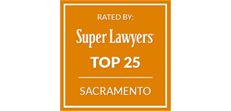Who Is Responsible for No-Seat-Belt Injuries in California?
Not wearing a seat belt is a factor that could affect a personal injury claim in California. California seat belt laws, according to California Vehicle Code 27315, make it mandatory for anyone 16 and older to wear a seat belt while riding in or driving a vehicle. Parents must be responsible for ensuring children under the age of 15 use safety restraint devices. If California car accident victims were not wearing seat belts at the time of the accident, this could change the way an insurance company treats the claim.
California Fault Laws and the Seat Belt Defense
In California, the driver who broke a road rule and caused the car accident will be financially responsible for damages. The at-fault party’s insurance provider will have to pay for the other victims’ losses. Before a claimant can receive compensation for damages and severe injuries suffered in the collision, however, they will have to prove the other driver’s fault for the collision. After an investigation of the crash, the defendant or his or her insurance company may try to avoid paying damages by using the seat belt defense.
The seat belt defense is a rule California adopted that permits a defendant to argue for less liability since the injured party was not wearing a seat belt at the time of the accident. If a driver or passenger was breaking California’s belt requirement when a car crashed, this could hurt their ability to recover full compensation during a personal injury lawsuit in California. A defense from the defendant could argue the plaintiff was partially to blame for their injuries due to the failure to wear a seat belt. This could lead to a smaller settlement award won by the claimant.
Pure Comparative Negligence Law
The no-seat-belt defense goes hand-in-hand with California’s comparative negligence law. While the driver or party that causes a car accident in California will be responsible for paying for injuries, the percentage of the victim’s compensation the defendant will have to pay depends on the situation. When a defendant alleges a plaintiff’s comparative fault, he or she is aiming to reduce his or her own liability for the accident.
Under California’s pure comparative negligence law, a plaintiff may receive a smaller compensatory award if they were partially at fault for the injuries claimed. A plaintiff could be 99% at fault for damages in California and still recover 1% of compensation. If successful, the courts could accept the defense as proof of the victim’s comparative negligence and use it to diminish the final amount of damages awarded. Even if the other driver was 100% at fault for causing the auto accident, the plaintiff could receive less compensation due to the seat belt defense.
In a comparative negligence state, the degree of a plaintiff’s fault for the accident will reduce their compensatory award correspondingly. If the courts allocate 10% of fault to a plaintiff for failing to wear a seat belt, for example, the plaintiff would receive $90,000 if $100,000 was the original amount awarded. The defendant would get to keep the remaining $10,000 – an amount to match the 10% of the plaintiff’s fault.
Statistical Evidence on Seat Belt Usage and Injury Severity
The connection between seat belt usage and the severity of injuries sustained in car accidents has been extensively studied, with statistical evidence consistently supporting the effectiveness of seat belts in diminishing the risk of severe injury and death.
The NHTSA and various safety organizations have published findings that highlight the critical role of seat belts in protecting vehicle occupants.
Reduction in Risk of Fatalities and Serious Injuries
NHTSA demonstrates that wearing a seat belt reduces the risk of death for front-seat passengers by about 45% and the risk of moderate to critical injury by up to 50%. For occupants in light trucks and vans, these percentages are even higher.
Seat belts are constructed to distribute the forces of a crash over the stronger regions of the body, such as the chest, hips, and shoulders, thereby reducing the impact on more vulnerable areas like the head and abdominal organs.
Impact on Ejection From Vehicles
One of the most significant benefits of wearing a seat belt is the prevention of ejection from the vehicle during a crash. The NHTSA’s statistics show that the odds of surviving a crash are greatly improved when the occupant is not ejected; unbelted occupants are 30 times more likely to be ejected from a car during a collision than those who are belted. Ejection from a vehicle is almost always associated with a higher severity of injury or death.
For individuals involved in such cases, understanding the implications of belt usage on injury outcomes and legal proceedings is essential. This statistical evidence serves not only to promote safety awareness but also to inform the legal standards applied in assessing compensation for vehicle accident injuries.
How to Prove a No-Seat-Belt Defense
Proving fault and obtaining compensation with a California car insurance claim takes a preponderance of the evidence, enough to convince the courts that the at-fault driver is more likely than not at fault for the car accident. To succeed in using the defense, the defendant must prove the plaintiff was not wearing a safety restraint device when the two vehicles collided. Proving this could take evidence from eyewitness accounts, police statements, injury examinations, crash reconstruction, photographs, and other sources. If you have a case involving the failure to wear a seat belt, contact a car accident lawyer in Sacramento for legal advice.

















